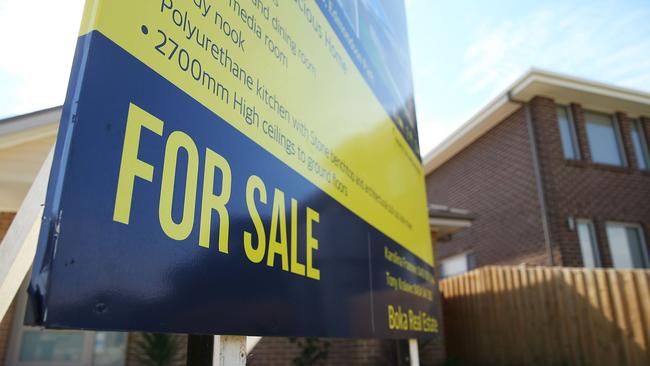Reserve Bank’s warning on negative gearing
A BRIEFING note from the Reserve Bank has suggested that restricting negative gearing could be good for the economy.

THE Treasurer has dismissed a briefing note from the Reserve Bank that suggests a crackdown on negative gearing could be good for the economy.
The internal document, dated December 2014, was released under freedom of information legislation.
It notes that the capital gains tax discount “might encourage leverage speculation, particularly in combination with negative gearing provisions”.
“Any change which discourages negative gearing may be a good thing from an FS (financial stability) perspective,” the document states.
But Treasurer Scott Morrison has dismissed the document, saying it was not “official advice” and it was also “out of date” as it was released in 2014.
He said the note was produced before APRA (the Australian Prudential Regulation Authority) told banks in 2014 to introduce tougher lending standards for investors, which have been effective in cooling the housing market in the last six months.
It was also produced before Labor’s policy to restrict negative gearing was announced.
Mr Morrison noted that the document also mentions “potential negatives from changes” could include an increase in rents.
During the ABC radio interview on Tuesday, Mr Morrison said the more “contemporary” note to pay attention to, was a recent warning from credit rating agency Moody’s.
He said it warned that one of the things that could take the Australian economy “off the rails” was a “negative shock to the property market”.
High housing prices was also not a problem across Australia and Mr Morrison said improving supply of new homes was the best way to deal with it, as this could be limited to specific markets like Sydney and Melbourne, and not negatively impact others like Perth and Adelaide.
Mr Morrison commended the work of NSW Premier Mike Baird and said there was a “supply pipeline” of new housing coming on stream that would hopefully improve the situation in Sydney.
The government has been under increasing pressure to act on negative gearing and the capital gains tax discount, with Labor proposing to restrict negative gearing to newly constructed homes from July 2017.
There would be no change for existing negatively geared property.
The RBA note warned changes to negative gearing could lead to a large-scale sale of properties but only if changes were not grandfathered. Labor has said it would grandfather its changes so they would not apply to properties that are already negatively geared.
Capital gains tax concessions would be cut from 50 per cent to 25 per cent, also with no change to the rules applying to existing assets.
In contrast, the government has suggested increasing housing supply — which is a state responsibility — as well as a crackdown on union corruption, would address rising house prices.
The note comes as the National Australia Bank reportedly told its clients that Australia’s AAA credit rating was at risk.
The bank’s global head of research Peter Jolly wrote to clients on Monday and said Standard & Poor was likely to lose patience with Australia over the government debt level and place its rating on “negative outlook”, according to Fairfax.
But Mr Morrison said the Budget was addressing concerns.
“I think people are jumping ahead here,” he told ABC. “What it highlights is that this is a very sensitive environment and why it’s so important to have a strong economic plan to drive jobs and growth.”
He said the government was introducing measures to support investment, to ensure it was not spending more than it was saving and slowing the growth in the deficit inherited from the Labor Party.
But Labor treasury spokesman Chris Bowen is expected to pounce on the AAA warning during a National Press Club speech today. He will promise to release a midyear budget review within three months of being sworn-in rather than waiting until December.
He believes Treasurer Scott Morrison “doggedly insisting” that Australia doesn’t have a revenue problem puts the rating at threat. Losing one or all ratings would have real implications for the economy.
The cost of government borrowing would increase, states would have their ratings reviewed, as would major corporations and banks, increasing the cost of capital in the economy.
And once lost, a triple-A rating is very hard to get back.
Australia lost its AAA rating from Standard & Poor’s in 1986 and it took 17 years to earn it back.
Mr Bowen believes the treasurer’s plan to return to surplus is built on extremely “shaky foundations” and includes the biggest upward revision to the iron ore price in five years.
At $US55 per tonne — up from a previous forecast of $US39 — it is far more optimistic than some domestic and international banks. “Hope is not a plan,” Mr Bowen will say.




